Violet-necked Lory
Also known as:
Violet-naped Lory, Violet-headed Lory, Wallace's Violet-necked Lory, Moluccan Red Lory
Also known as:
Violet-naped Lory, Violet-headed Lory, Wallace's Violet-necked Lory, Moluccan Red Lory
DID YOU KNOW?
Lories and lorikeets are also known as “brush-tongued” parrots.

Eos

squamata
Size:
27 cm (10.5 in)
Weight:
110 g (3.8 oz)
Subspecies including nominate:
three: E.s. squamata, E.s. riciniata, E.s. obiensis
Colour Adult:
E.s. squamata: Both adults purple/blue wide band around neck, varying in width individually; abdomen to undertail coverts dark purple; scapulars soft purple tipped in black; greater wing coverts and flight feathers red with wide black tips; underwing coverts and undersides of flight feathers red, with black tips on primaries; tail purple/red. Beak orange/brown. Eye orange.
E.s. riciniata: Both adults bright purple/grey neck band extending up to hind crown with red nape; scapulars red; throat to upper breast purple/grey, with red border on lower breast.
E.s. obiensis: Both adults as in riciniata, but scapulars black, not red; varying purple/grey neck band; throat to upper abdomen red in colour.
Colour Juvenile:
As in adults but feathers of underparts lined with dusky mauve/black. Eye brown.
Call:
Loud screeches and shrill notes made while in flight. Short, high-pitched squeals, screeches and whistles, some faint, others loud, made while feeding.
More Information:
Content Sources:
CITES
The Lory Link
BirdLife International
Cornell Lab of Ornithology/Birds of the World
Parrots: A Guide to Parrots of the World, Juniper and Parr, 1998
Parrots of the World, Forshaw and Cooper, 1977. 2010 edition
Parrots of the World, Forshaw, 2006.
Lexicon of Parrots, Thomas Arndt.
Parrots in Aviculture, Low, 1992.
Parrots: Their Care and Breeding, Low 1986.
Captive Status:
Once common
Longevity:
25-35 yrs
Housing:
Enclosure with well drained, concrete or tile floor (sloped) or suspended aviary over concrete base.
Diet:
A commercial type nectar or one made from: baby cereal (lactose-free), honey and malt extract or molasses, mixed with water, made fresh once or twice daily, and comprising at least 40 percent of the diet; vegetables and fruit such as: carrot, corn on the cob, green leaves, apple, pear, bananas, etc; figs soaked in water for a few hours; spray millet and a small amount of soaked or sprouted sunflower seed and a little canary seed or oats.
Enrichment:
Bathing (essential for nectar consuming birds), socialization, swings, ladders, puzzle balls, noise makers, bird-safe chewables (heat-sterilized pine cones, fir, pine, elder or willow branches, vegetable tanned leather toys).
Nest Box Size:
8″ x 8″ x 12″ (20.3 cm x 20.3 cm x 30.5 cm) vertical or L-shaped box.
Clutch Size:
2
Fledging Age:
9 weeks
Hatch Weight:
—
Peak Weight:
—
Weaning Weight:
—
World Population:
Unknown, stable.
IUCN Red List Status:
Least Concern
CITES Listing:
Appendix II
Threat Summary:
A BirdLife “restricted-range” species. Are trapped for the wild bird trade.
Range:
E.s. squamata: Gebe, Waigeu, Batana, and Misool, in W Papuan Islands, and Schildpad Islands, Indonesia.
E.s. riciniata: N Moluccas, from Morotai to Bacan and Damar, also Widi Islands, and Mayu Island in the Molucca Sea, Indonesia.
E.s. obiensis: Obi, N Moluccas.
Habitat:
Found up to 1220 m (4001 ft) in coconut plantations, mangroves, secondary forest and primary montane forest.
Wild Diet:
Diet includes pollen, nectar of Erythrina flowers and flowering sago palm, fruit, unripe Ficus figs and possibly insects.
Ecology and Behaviour:
Usually found in pairs or small groups of up to 10 birds. Flocks travel to and fro between different islands, in response to food availability. Noisy and conspicuous.
Clutch and Egg Size:
2 rounded eggs, 27.0 x 21.5 mm (1 x 0.8 in).
Breeding Season:
—
Related Links:
—
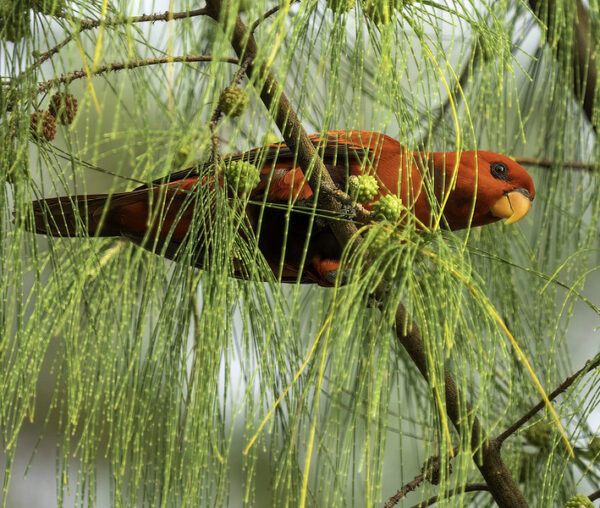

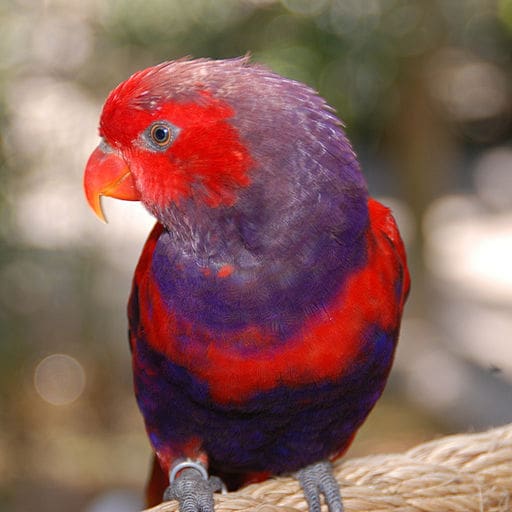
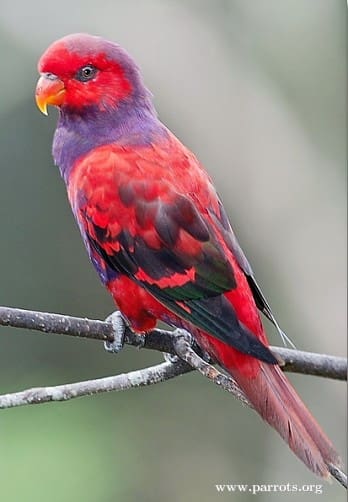
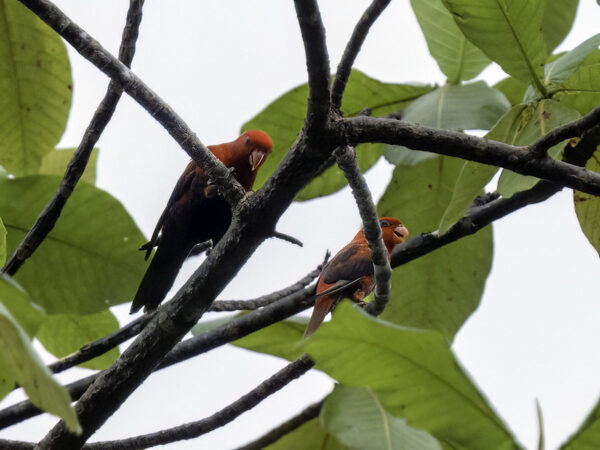
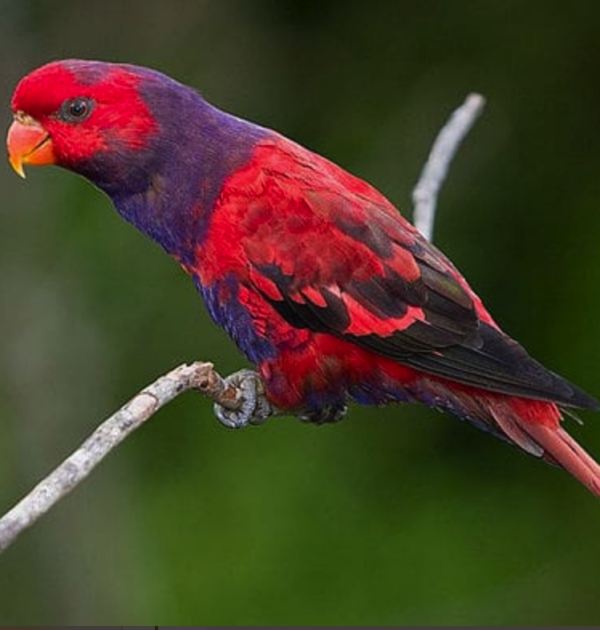
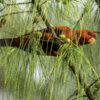

![© Kathy Blohm [CC BY 2.0] via Wikimedia Commons](https://gt2024.parrots.org/wp-content/uploads/2023/01/wpt_Violet-necked-Lory_1222-2-100x100.jpg)
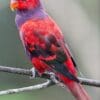
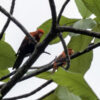
![© Doug Janson (Own work) [CC BY-SA 3.0 or GFDL] via Wikimedia Commons A Violet-necked Lory perches on a twig](https://gt2024.parrots.org/wp-content/uploads/1991/01/Violet-necked-lory-2-100x100.png)